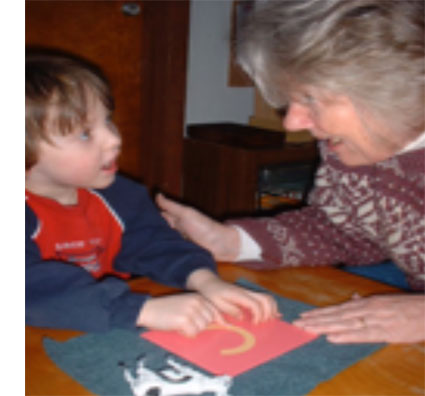Learning to read as a young child can be relatively easy for those of us who have a mind for it. But for some, learning to decode the complex English language can be a daunting task, particularly for children who are at risk for dyslexia who learn differently. Failure to master the basics early can seriously handicap subsequent learning. What if we could design a rigorously conceptual approach to preschool literacy that engages the greatest potential of every child, regardless of learning challenges, and at the same time strengthen his critical reasoning skills?
 Our groundbreaking preschool literacy program engages the greatest potential of every child regardless of learning challenges and at the same time strengthens his critical thinking. During the 45 years of pioneering this approach to teaching pre-school children how to read, this program has been particularly effective in facilitating the reading skills of children either diagnosed for, or predisposed for, dyslexia, thus reducing the need for future remedial intervention.
Our groundbreaking preschool literacy program engages the greatest potential of every child regardless of learning challenges and at the same time strengthens his critical thinking. During the 45 years of pioneering this approach to teaching pre-school children how to read, this program has been particularly effective in facilitating the reading skills of children either diagnosed for, or predisposed for, dyslexia, thus reducing the need for future remedial intervention.
Sound Shapes Precision PhonicsTM is a breakthrough Montessori-based pre-school reading program which has been developed and tested at Nightingale for over four decades. With funding from the Turner Foundation in Springfield, it has been developed as a marketable product.
The method integrates the latest brain science with Maria Montessori’s foundational concepts of 'isolation of difficulty' and 'control of error.' Building confidence in the child’s inborn “mathematical mind,” the program boosts his inborn capacity to wonder, inquire, and think logically.
Case studies and ongoing evaluations point to the program’s unprecedented success with early learners, particularly for children who may be at risk for dyslexia. In fact, it serves as an early diagnostic test allowing teachers to intervene proactively before dyslexia becomes more difficult to overcome.
Interestingly, the child who has a predisposition for dyslexia, is particularly strong in problem solving, 'outside-the-box' imagination, and critical thinking skills. She typically compensates for cognitive differences by activating the reasoning part of her brain. If we strengthen the capacity to access these inherent abilities in both dyslexic and typical learners, all children can quickly become fluent readers!